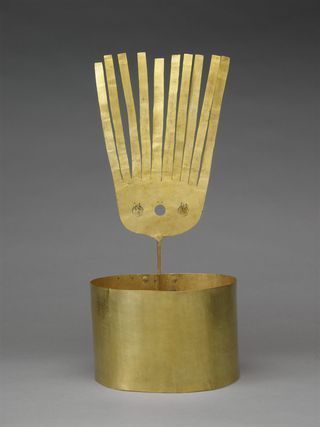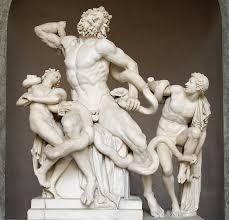Mary Beard's Blog, page 29
November 23, 2014
Michelangelo's David at the V and A
I have always had a soft spot for plaster casts, partly in (I confess) an "I told you so" sort of way.
My Faculty in Cambridge has one of the best (and best documented) collections of plaster casts of ancient sculpture in the world, more than 600 of them. About 25 years ago I got interested in them, where they had come from, what kind of debates they had provoked, how they had intersected with bigger debates in the history of (classical) art. And indeed I wrote a little paper on the collection, published in 1994, in what was then the Proceedings of the Cambridge Philological Society.
I have to say back then, many of my colleagues thought this was a strange, antiquarian and embarrassingly local interest. And I suspect that it was only by the skin of its teeth that the article got accepted.
But (and this is the self satisfied bit) since those days the kind of issues I raised -- about plaster casts as a key site of debate about valuation of original vs copy, or about authenticity etc -- have become much more mainstream, and probably (I admit) have been discussed much more acutely than I managed. All the same, I still feel a strong affection for these strange masterpieces of the copiest's art.
And so it is with quite a bit of excitement that I am going to the V and A on Tuesday to the opening celebration for their renovated Italian Cast Court, to "say a few words". Star of the show, though, will be Michaelangelo's David (above).
The V and A cast courts are (as you would expect I guess) about 10 years older than the Cambridge collection, and not wholly, or even mainly, classical (though the Trajan's Column cast -- not in the Italian Court -- was always a highlight). And their original purpose was never as rigidly academic as what we have. Our's was originally meant for students studying classical sculpture in the days before there were good pictures (and although we use them now for a much wider range of public engagement purposes, that is still clearly the collections founding function). The V and A (or the South Kensingtom Museum as then known) had a much wider mission.
Part of the point was to show the masterpieces of world art to "the working class order" (in that nineteenth-century phrase), but in as spectacular and impressive way as possible. The point was not that they were just "copies", it was that they were as "real" as you could get. And they were displayed in a vast, palatial architectural setting that was as impressive as you could imagine. The fact that Michelangelo's David was plaster not marble isn't what was at stake. This was, if you like, about replication as the essence of impact and originality.
I am really looking forward to seeing this revived display, in all its glory -- including (yippee) the uncovered and restored ceramic floor, previously buried under the lino. And I am wondering if David will have his specially fitted nineteenth-century fig leaf. What's the betting?
November 18, 2014
The new Public History Prize
I confess that this is a bit of extremely well-meaning and well-intentioned PR. I am pleased to be one of the judges of the new Public History Prize, which is being run by the Royal Historical Society (in collaboration with the Public History Seminar at the Institute of Historical Research). And so I am actively soliciting entries and nominations.
I am not sure that "public history" is a category that meant much thirty years ago. And if it did, it may have been tainted with a preoccupation with the local and the simple. I remember that my mother always said -- and this is going back a good way further than thirty years -- that when she tried to run history classes in Church Preen, Shropshire, she got a good audience until the horizons were raised to Acton Burnell, Shropshire. At that point no one wanted to know.
Things have changed. That is partly I guess because some brilliant micro-studies have shown how the local is important and wide-ranging, and opens perspective up rather than excludes Acton Burnell (think Montaillou or the Cheese and the Worms). But also because of a growing sense that public history need not just be local history, and that to talk to a wide range of people doesn't need to be some awkward exercise in dumbing down.
So I am asking you, please, to look at the website on the link above, and to see what you might like to nominate in the various categories (which extend from lovely old-fashioned books to online sites and tv programmes.
I guess that we will all have our own definitions of what good "public history" is. My own is, in a nutshell, something that "opens up without dumbing down". And the more people get some recognition for that the better.
There are some great projects out there, which often fall under the radar, so let us know! The more the merrier.
November 15, 2014
How to write an email
I have recently noticed that I have started not to "sign" emails. I mean, as the heading says who is it coming from, is anything more needed? Only if one keeps up the pretence that it is a letter (I mean no one signs a tweet, do they?).
But that is only the start of it. What should an email look like? If we were to scan a book of courtesy and forms of address, how would it advise on emails.
I have to say that, despite what I have just said, I actually prefer those emails which are exactly as old-fashioned letters would have been: "Dear Mary... Yours, Simon" (I hope Dr Heffer is reading this, because it to you whom I refer, though I rather doubt you are!). I find myself more irritated with those much more email specific locutions, that play too much with the apparent familiarity of the genre.
I, for example, do use "Hi Simon" (though not to Dr Heffer), but sort of hate myself when I do. There's worse.
I particularly dislike the phrase (sorry to those that I am going to annoy now) that greets many unsolicited email communications, "Dear Mary, I hope this email finds you well...". Did letters once start like that? Maybe they did, but not any that I used to receive. And it does seem the worst sort of inanity. (On the principle of "nothing is worth saying unless its reverse would be meaningful", this fails miserably... "I hope this email finds you ill.."?)
And then there is the false jollity that the medium seems to encourage. I really hate getting emails in July from students (more people I am now going to annoy), which start "Dear Mary, I hope you are having a lovely holiday..". Err sorry, sunshine, I have been, and am, working my socks off, and while you might think this is a holiday (and honestly you shouldn't, as you should be working too), I DONT. (Did they use to say this in letters, I think not.. It was more, "Dear Prof Beard, I am very sorry to disturb you, but I wonder if I could ask for some advice on....".
There is also the false sense of entitlement that the genre implies. Don't get me wrong, if people write to me with a genuine question about the ancient world, I am happy -- and honoured -- to reply. But when the other week, I got an email from a middle school student in the USA, whose teacher had encouraged her to "reach out" to an expert about Pompeii, I wrote back to say that I was happy to help (be reached out to), but only if she could tell me what books she had already consulted. After one more exchange (with no list of books) the correspondence ran dry. I guess she had probably "reached out" to quite a lot of other experts and they had not imposed any such conditions (like doing a bit of reading..?). For info, I get about 5 of these a week, and always make the same response, which only a few actually rise to.
That one, by the way, started "How do you do?".
So does anyone know of a style guide to emails. When I was at school we seemed to take ages learning when to say "Yours faithfully" or "Yours sincerely". Are kids now being taught the rhetoric of emails? Is "I hope this email finds you well" or "How do you do" actually being RECOMMENDED?
Someone must know,
November 12, 2014
Supporting STEM subjects doesn't mean knocking Humanities
I don't know a single Humanities colleague who doesn't support the campaign to get more women into STEM subjects. And I don't know a good scientist who doesn't want to support Arts and Humanities. The issue for most of us is a simple one: there are women who are extremely talented in STEM subjects who may be being put off from all kinds of more or less hidden prejudice (just as there may well be girls whose talent lies with the double bass who are pushed to the flute); we want to encourage them in.
We want young people to follow their talents, regardless of gender. There really isn't an academic argument here.
So it is deeply depressing seeing the Secretary of State for Education (Nicky Morgan) using support for STEM subjects in such a crude way, and pretty close to bashing Arts and Humanities. To be honest, for me, Morgan attacking Humanities is as off-message as Gove was.
No doubt it is well intentioned. But she throws around statistics and "facts" and argument without any obvious sign of having thought of the complexities, or what the basic aim is: namely we dont want kids to be forced by gender into subjects in which they wont excel. (We want boys to do Art History, as much as girls to do Further Maths.) That's different from trying to push kids into specific subjects regardless of talents. That is only part of a modern myth that we could be good at anything, so long as we put our minds to it and fulfil the assessment criteria. Sorry, everyone, I would NOT be good at Physics or Further Maths.
Morgan's speech is also sprinkled with dubious and potentially misleading statistics. She quotes a figure that says that people who study maths to A level have lifetime earnings 10% greater than those that haven't. I have two reactions to that. The first is to say that I would not push a student into a subject at which he or she had little talent, or in which he or she had not much enjoyment on the basis of a life time extra earning. What I have see is that a Maths degree might give you a £60k lifetime extra over an English degree (which is a bit over £1000 per year....little compensation if you are doing what you dont want to do).
But the real problem is the cheap swapping of statistics, which are really too complicated than they seem. So I could reply to Ms Morgan that only 7.4% of English graduates are unemployed six months after graduating, whereas 8.5% of Maths graduates or 13% of Computer Studies graduates were unemployed. But I (and she) would know that all this depends on the ethnicity of the students, the class of degree, and the ostensible prestige of the university, and so on. You can access some of the figures here. And there is more complicated stuff here.
It is all very complicated, but try telling a black woman with a third class degree in Maths at a new university that this was a better than doing a degree in Classics (at which she was good, and in which she was interested).. and she would tell you where to get off.
The basic point is that we will do our best by the country if we encourage the talents of our kids, who will do best for everyone if they do what they are good at, gender notwithstanding.
Thanks by the way to Steve Kimberley who pointed me in this direction.
November 8, 2014
The adventures of Lord Elgin's son
We went last week to a preview of two great shows at the Queen's Gallery. The one that really took us there was "Cairo to Constantinople" -- photographs taken Francis Bedford who in 1862 went with the then Prince of Wales on a tour of the Middle East and Eastern Mediterranean. He was apparently the first photographer to travel on a royal tour (this one spent partly in tents, not grand hotels), and the photos were exhibited to much razzmattaz on his return.
But various things struck us, apart from just the obvious. First, there were quite a lot of pictures of Athens, where the prince saw a lot of the available sights. They included the pic above. As you can see, it shows a few blocks of the Parthenon frieze, but assembled a bit randomly, with a group of the gods from around the "peplos" incident, next to unconnected scenes from the main procession. These have obviously been taken down from the building and put on rough and ready display somewhere, but where I wonder. It made me realise that I didnt know enough about the dissassembling of the frieze post Elgin in Greece.
Even more curious (or deeply ironic) is that the Prince's main guide on this visit was General Robert Bruce, who was son of the seventh Earl of Elgin (of the marbles) -- and he actually dies back in London in the summer of 1862, from some kind of illness caught on the trip.
It is strange to imagine how that ancestral connection would have played out on the tour!
Anyway, the prime object of the visit to the Queen's Gallery brought rich rewards. In truth we had been rather sniffy about the accompanying show -- which was "Gold".
But there was a good bit of food for thought, and the unexpected here too (much less of a gawper than we had feared it might be). It did a very good job in facing up to the symbolic richness of gold (including a rather amazing Danae being impregnated by a golden shower ). In a way though, it sprang many of those dating surprises that the Academy's Bronze show did last year: there something about metal which puts clear chronological periods into the background.
So, as an example: what date do you think the lovely gold object above is? And indeed what is it?
The answer is that it is 1000-1400, a crown from Ecuador presented to Queen Victoria in exactly the same year as the Prince of Wales was camping round the Middle East.
It's hard not to wonder what she would have made of it!
November 6, 2014
Changes at the TLS
The eagled-eyed reader of the list of staff at the TLS (listed on the next to back page of the paper) will have spotted that the Assistant to the Editor is now Jan Sims (very warm welcome Jan!) -- and that Maureen Allen (radiant above) has left us for an action packed retirement.
Maureen had been at the TLS longer than me (which means since before 1992 and is my rather egocentric way of measuring TLS time), and I had indeed met her the first time I went to meet the then editor Ferdy Mount, at St John's Gate. Her recollection is that I went up to her and said slightly stiffly that I had come to see "the editor" -- which I can well believe, though the stiffness was masking terror at entering the august (and rather messy) portals.
Since then Maureen has been my lifeline at the TLS (from sorting out my pay to finding books I lost and helping me pack up stuff each time we moved office -- which is more often than you would imagine!). And she has been the lifeline for everybody else too. (If you ever wondered who made sure that those who wrote for us received a cheque for their labours, well look no further.)
Anyway in the late summer, we had a slightly early goodbye party for her on the Thames, and messing about a bit in boats (just after we had moved to our last new office in the Baby Shard). It was for all us grateful staff and our kids from grown up to tiny.
And, as you can see from the pics (that is the breezy John Ryle below, ex of TLS, and already rubbing his head in anticipation of next morning)
So here's to more fun Maureen. We'll miss you. But will see you soon, I'm sure.
November 2, 2014
The Tower of London Poppies
When I first read Jonathan Jones on the Tower of London Poppies, I felt a twinge of sympathy. I have enjoyed this amazing sight and was lucky on a couple of occasions to be allowed down into them. But I sort of knew what he meant about turning mass slaughter into a pretty, easily approachable, can-take- your-kids-to, work of art.
In fact, I had always felt something a bit similar when my own offspring were doing World War II at primary school, when the whole thing -- it seemed to me -- risked getting turned into a story of Mickey Mouse gas masks, with not a word about the gas chambers. OK, you can see why you might want to draw a veil, but it still had the effect of turning war into a cosy story of domestic displacement.
The political argument is I guess about sanitising war. If it always looks so beautiful, then we'll end up going there again and again. Let's see it as it is.
I'm not sure that the artistic or art historical argument is quite so simple, though.
I found that the whole thing took me back to the famous Roman sculpture Laocoon, the Trojan priest from Virgil's Aeneid who warned against accepting the wooden horse ("timeo Danaos..") and was punished (the reasons given differ) by being crushed to death, along with his sons, by a couple of sea serpents.
The classic problem here, raised in the eighteenth century already, is how we can enjoy looking at this work of art, when actually what is depicted is a very unpleasant murder? What is the relationship between aesthetics and pain and suffering.
There have been many answers, but the bottom line is that the correlation between the aesthetically pleasing and the morally despicable is a rather more complicated one than Jones suggests, and the sooner we get our heads round that the better. (Else we soon fall into the trap, a few steps further down the road, of assuming that bad men make/sponsor bad art . . . than which nothing, I fear, could be wronger.)
But I still think, well done Jones for raising the issue. And well done Tom Piper the artist for creating an installation that so many people have wanted to see. (If he could go on, I'd like him to do more and maybe different coloured poppies for all the dead on the other side etc)
His reply to Jones is here.
October 29, 2014
If this lady were a car...
The husband and I have been thinking of getting a new car. That means for us getting a Vauxhall, not because we particularly like Vauxhall, but because there is an excellent Vauxhall Garage (Murketts of Cambridge if you want to know), about five minutes walk from our house. That means you can take the car in without having to worry about the "courtesy car" to get you back home. And anyway they are extremely nice (by which I mean when you have a silly problem that you ought to be able to solve yourself, they solve it for you and dont treat you as an idiot). We have been going there for 20 tears or so.
So the garage is a done deal, and if that means a Vauxhall, so be it. We've never had any problems (except the clock on our last one is always running slow, and the sat nav isn't state of the art... but that isn't a big deal).
Anyway, we had kind of decided that we would get a new Corsa. In the old days, we had needed something a bit more capacious with the kids, but now a little Corsa is quite big (and good) enough for us.
However, when I got back from Italy, the husband was on the point of changing his allegiance. He had just been sent the new Corsa brochure. Illustration on the first page is above.
Maybe I am naive, but I had thought the whole thing of advertising cars as woman-substitutes had gone out years ago. But this brochure didn't just have the picture of the girl with legs all over the dashboard, most pages were loaded with little bits of innuendo... "Love at first sight" the first page was headed. "Unashamedly attention seeking", it went on, with "super-stylish curves meets touchy feely surfaces". And what about "Ambient lighting welcomes you in"? In what?
And so it went on. Ok, I should have better things to do that to worry about what sexist rubbish car advertisers choose to plaster their brochures with. But to be honest I hadn't realised it was still the order of the day. I thought the slogan pictured above had kind of finished it.
Besides, what was particularly weird was that this was advertising a Corsa.. a nice, decidedly middle/lower market, car aimed at people who don't think of themselves as sexy. The old-fashioned "ladies run-around", as we might once have said.
So how do you explain it? Well, maybe I just don't realise that all cars still advertise like this. Or maybe I dont realise that it is blokes who buy the Corsa and need to be persuaded that (despite everything) it's a sexy buy. Buy a nice boring car (selling point for me) by being conned by the ads that it has ladies legs all over it?
But -- oh Vauxhall, if you are listening to this -- I for one (and the husband) was really put off buying a Corsa thanks to your brochure. No more legs and innuendo please. What the hell impression do you think it makes on your women buyers? Stop it.
(What is more, as the husband complains, there are no prices in the sodding brochure.)
October 26, 2014
What does David Cameron tweet?
I have been in Rome this last couple of weeks, trying to make headway with my book in the peace of the American Academy. And I've done just two gigs: a lecture on Laughter at the American University next door, and a discussion on women, books, blogs and social media at the Academy (you can see a bit about it here if you go down to 21 October). My pipedream has been never to leave the Janiculan or to be more than 500 metres from the library for a fortnight -- which I have nearly, but not quite, managed.
Anyway, the discussion was fun, and we fell at one point to talk about the deocratising potential of online communication. As some of you will know, I have serious doubts about how much a force for democracy media like Twitter are. It is often hyped as the place where the ordinary person can talk to those in power, but that only works if those in power are listening. Democracy is about being heard, not just about being allowed to sound off -- and it would take a very naive soul to imagine that David Cameron read anything tweeted to him. Indeed it would take a very naive soul to imagine that he actually wrote most of them. (No criticism intended there: I would hope he had better things to do.)
Anyway, I decided afterwards that it might be a good idea to take a careful look at a few "leaders'" tweets and twitter accounts. All my cynicism, I should say, has been amply confirmed.
I started with the Pope. He has an impressive 4.63 million followers (especially impressive since he has only been tweeting since Feb 2012) -- but there is not much sign of ineraction with his flock. Most of his tweets are pithy moral homilies (like "To change the world we must be good to those who cannot repay us") and he is only following eight people. And the lucky eight turn out to be his own twitter accounts in other languages!
David Cameron appears to have two twitter accounts. One (accompanied by his face and poppy) is as "UK Primeminister" (2.83 million followers since March 2008). This is rather similar in style to the pope's, though slightly more in the vein of handy hints. The last ran helpfully: The clocks go back tonight. Remember to #TickTockTest your smoke alarms! #FireKills http://thndr.it/ZxF86D
Nice to know he cares.
More to the point though, this account does tell you Number 10's social media policy. The bottom line is that if you want to get in touch with the primeminister, you should send him a letter. You can try an email if you want, but they get so many they cant guarantee a reply. As for tweets, they are open about the account being managed by the PM's "social media team". They "review" (note -- they carefully dont say "read") the @tweets once a day, but dont usually reply. Oh, and "We can’t engage on issues of party politics", which must cut out quite a lot.
Cameron's "personal' account (slightly different face plus poppy, as at the top of this post) has 828,000 followers, while he follows 369 accounts, mostly journalists, politicians and good causes, plus Chipping Norton lido. I may be quite wrong, but I my guess is that he doesnt actually tweet much here himself, but this is reserved for more personal messages. Like the last: "I'm angry at the sudden presentation of a €2bn bill to the UK by the EU. It's an appalling way to behave and I won't be paying it on Dec 1st". There's also a good bit of "reaching out" (especially to "faith communities): "Happy #Diwali and happy New Year to British Hindus, British Jains - and everyone around the world - celebrating the festival of lights." But not much sign of any interaction going on.
In case you're wondering Ed Miliband is much the same: a rather more modest 351,000 followers since July 2009, and he's following 1457 (same basic selection, but he appears to follow every member of the parliamenary Labout Party). And the same dreary stuff:
"3 million British jobs and thousands of British businesses rely on the EU. I won't be the Prime Minister that puts that at risk"
"I'll reform our immigration system. With Labour you'll get clear, credible, concrete change, not false promises or a risk to jobs & business"
And he didnt forget Diwali either:
"Happy Diwali to everyone celebrating today! An important festival and an opportunity to spend valuable time with loved ones #Diwali2014"
As I said, I'm not blaming any of them on this. I'm not sure I want government by Twitter. But if we're kidding ourselves that these platitudes are democratising, we should think again.
October 22, 2014
Chapter five
Those of you following the progress of the Rome book I am writing will be pleased to hear that I am getting to the end of chapter five -- which takes the story of Rome from being a power in Italy to being a power in the Mediterranean as a whole. Basically I am talking about 300 BC to 146 BC (the defeat of both Carthage and Corinth), and that includes the Hannibalic war.
To be honest, I have never really taught this period (and it is in teaching that you really get to know something), and -- even worse -- I have always rather reacted against the Boys Own Paper view of Hannibal and his war agaimst the Romans. I mean, to be honest, those elephants were a great PR exercise, but more trouble than they were worth. Elephants are risky in battle -- if they get wounded, they are just as likely to run amok over their own side as over the enemy. Hannibal might have had more success without the big beasts.
But getting down to it, I have found much more vivid and intriguing detail in this period than I had ever imagined. I love the idea, for example, of the elderly Hannibal ending his days advising the king of Syria how to beat the Romans (unsucessfully as it of course turned out).
And I love even more the story of the Syrian prince Antiochus Epiphanes who had been held as a hostage in Rome for several years in the 180s BC and then returned home (in a hostage swap) completey imbued with Roman habits. He apparently dressed himself up in a spruce white toga and went round the centre of his town chatting up voters, like candidates for offices did in Rome. The people of Syria were apparently baffled.
So actually it's not all about Hannibal and elephants. There are issues of culture and cultural identity here that I'm trying to get my head around.
Mary Beard's Blog
- Mary Beard's profile
- 4110 followers

















